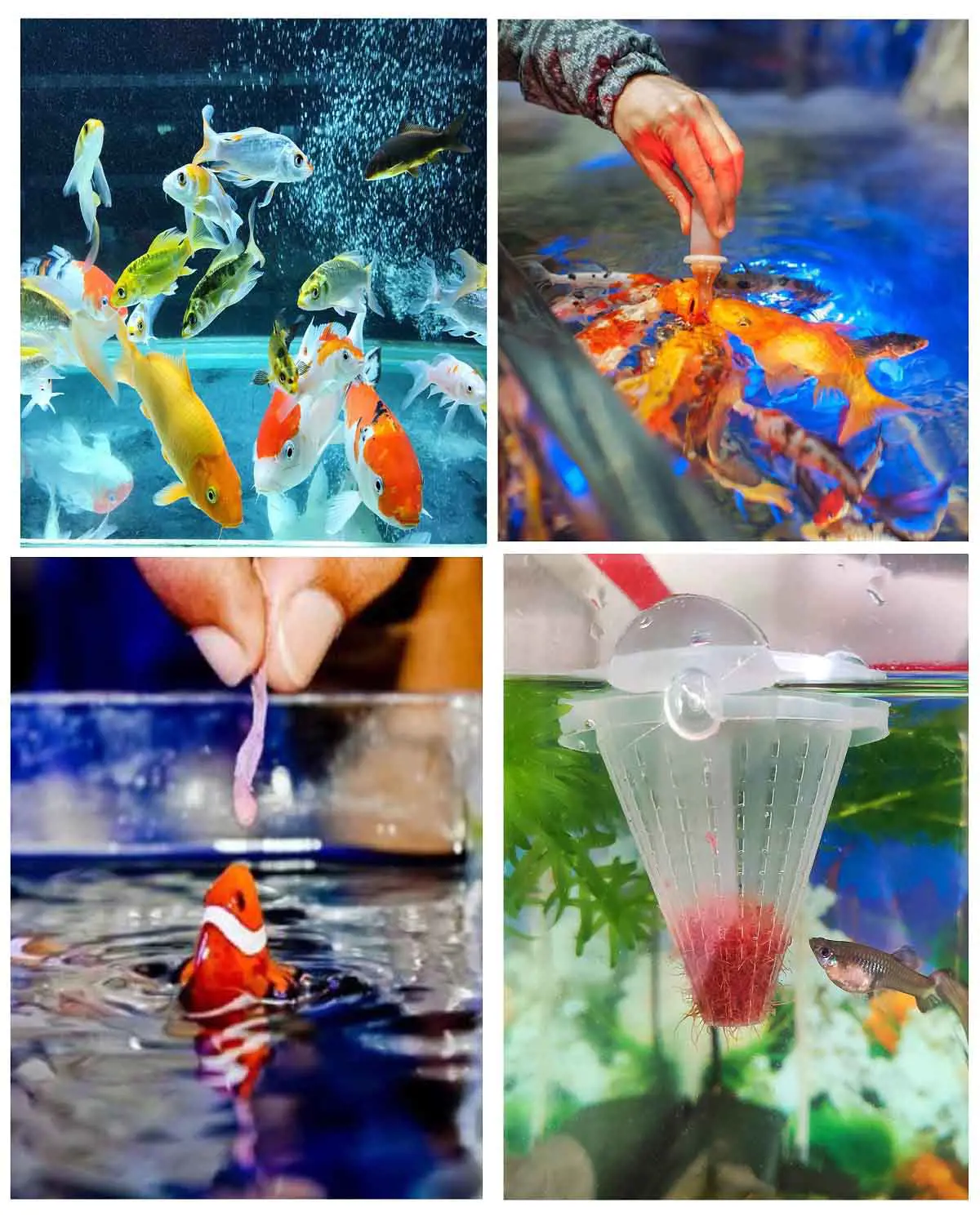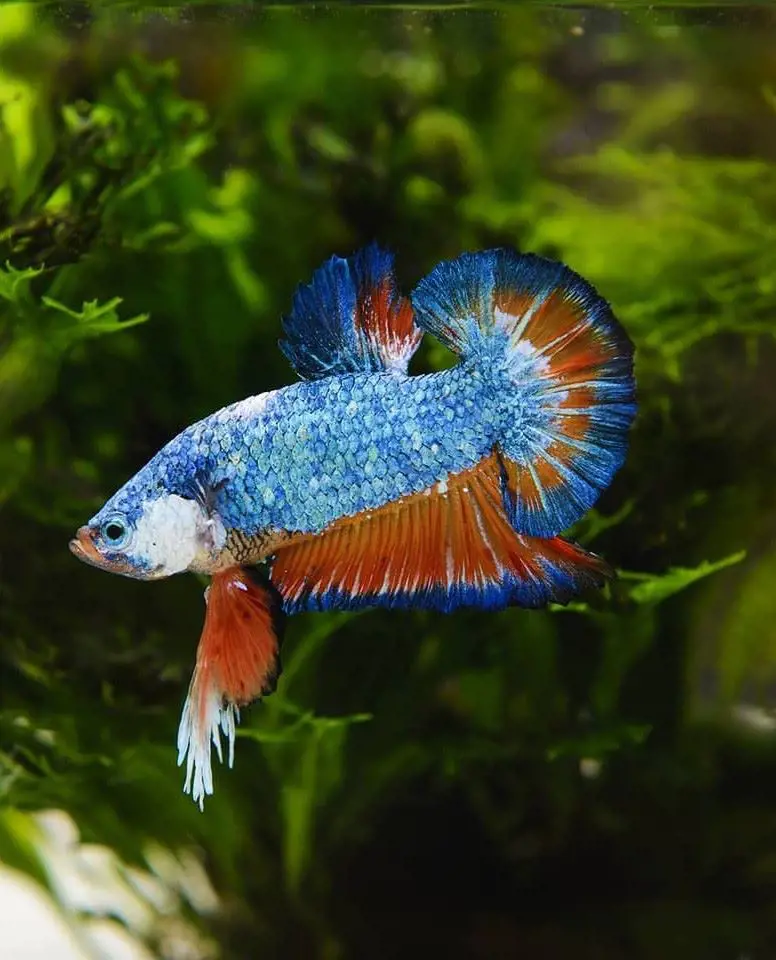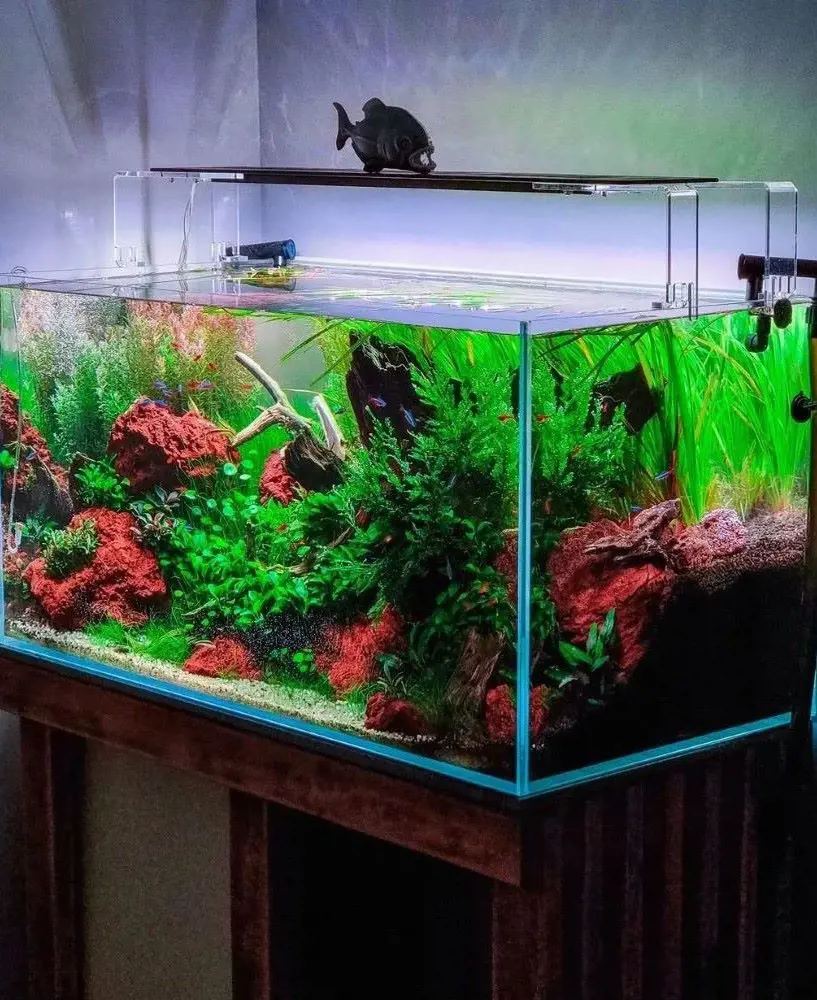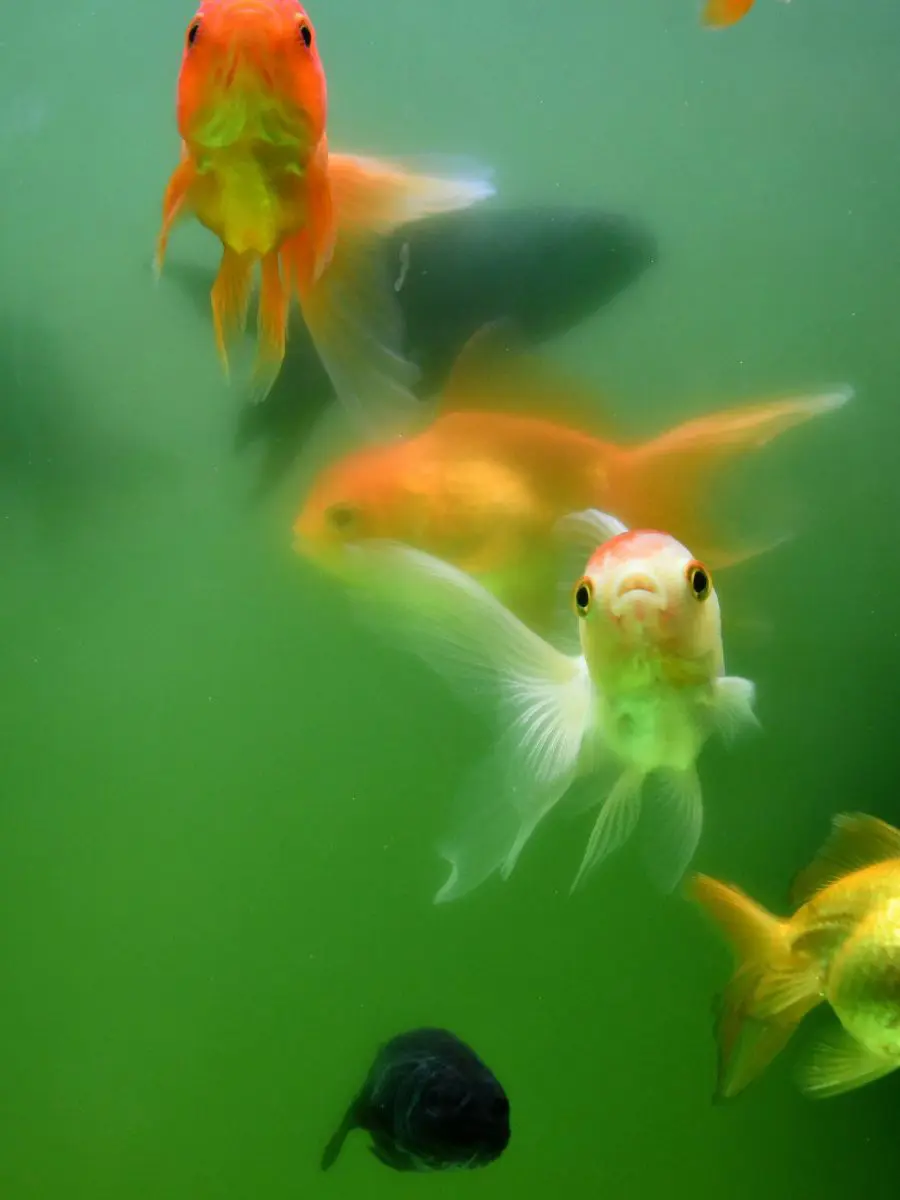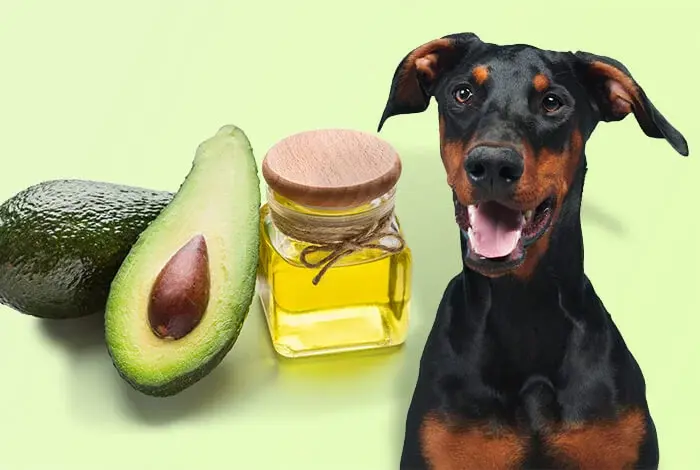20 Types Of Bottom Feeder Fish
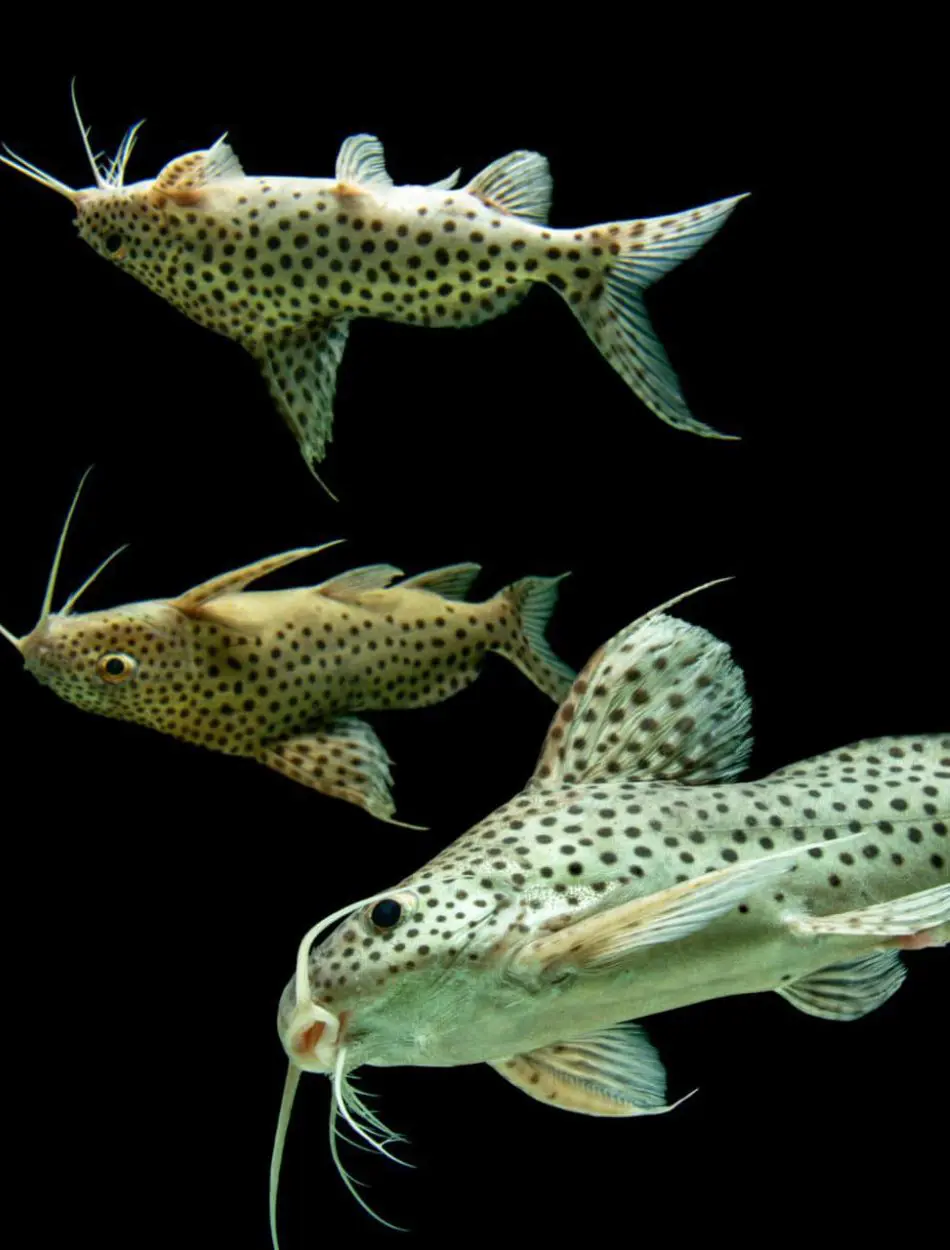
Bottom-feeder fish are those fish that spend most of the time at the bottom of the tank. They play a significant role in maintaining the healthy ecosystem of the tank by consuming organic matter, algae, and leftover food that resides on the substrate.
These fish are a fantastic and mindful addition to any aquarium. With the help of these fish, your aquarium can look clean, vibrant and also maintain a healthy water ecosystem. This article provides you with 20 types of bottom breeder fish that can be added to your tank.
1. Synodontis Catfish
Synodontis Catfish is a peaceful and active species that has a unique body shape with a broad, flattened head and large spiny pectoral fins. These fish are bottom feeders who use barbels to locate food on the substrate and clean up uneaten food and waste.
They survive well in a tank with a well-maintained substrate and look out for hiding spots such as caves or driftwood. It is recommended to keep them in warm, slightly acidic to neutral water with tank mates who are not very small or overly aggressive.
In addition, they are also known for exhibiting funky squeaky behavior and swimming upside down. These fish are beautiful and light up your tank with distinct patterns and dots while making sure the tank environment is also clean and healthy.
2. Bristlenose Pleco
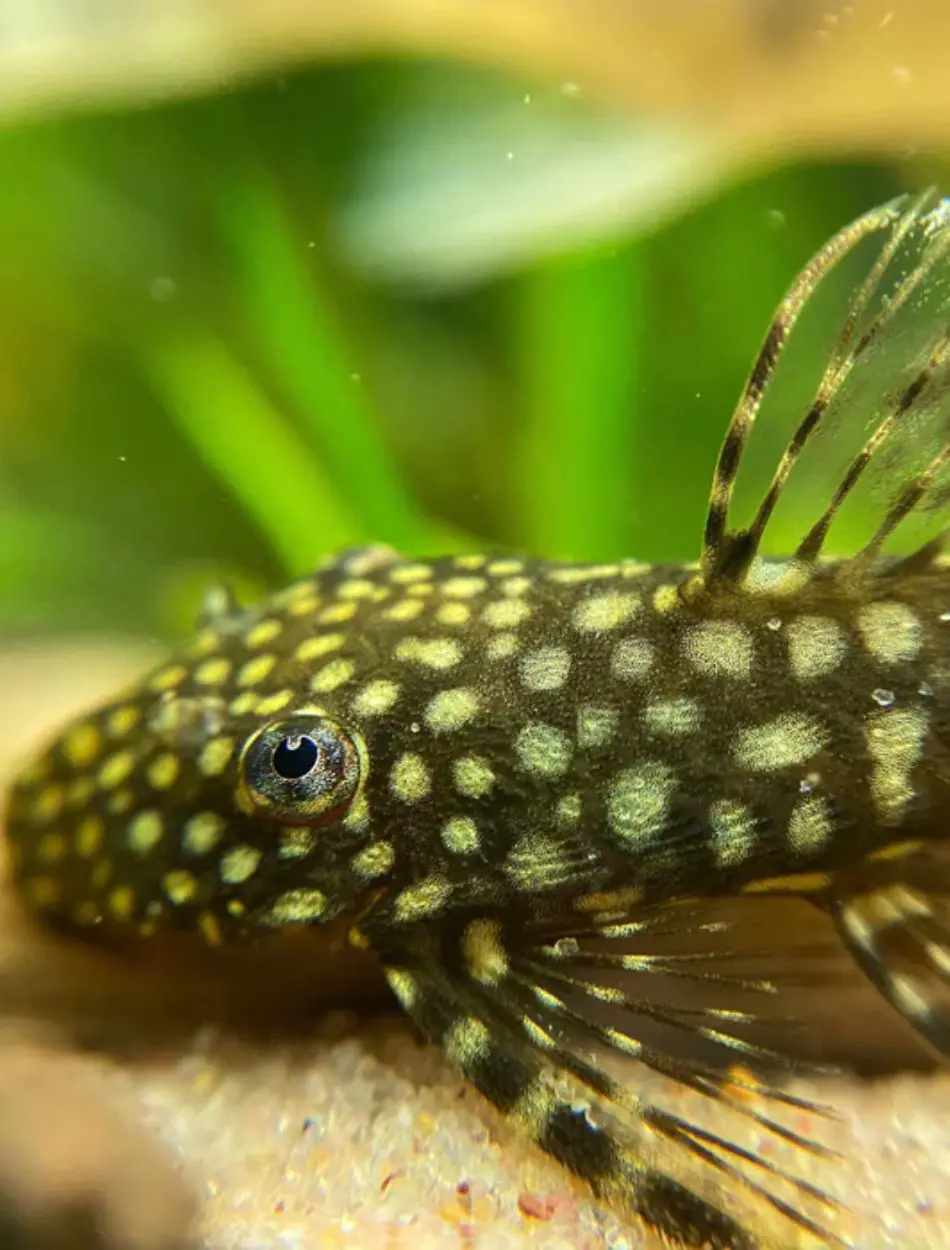
Bristlenose Pleco has unique "bristles" or "warts" on its snout that are more defined in males and are modified pectoral fin rays. Their bodies are flat and armored with broad heads and tails that taper to a point. These fish can be found in numerous colors including brown, green, and black.
Depicting bottom-dwelling behavior, these fish feed primarily on algae by scraping it off of the tank surface using their specialized mouthparts. Due to this reason, they play a major role in controlling biofilm and detritus as well. They thrive in tanks with plenty of hiding spots and slight to acidic water conditions.
3. Zebra Loach
The Zebra Loach is a fascinating bottom-feeder fish that adds beauty and activity to your aquarium. They are easily recognizable due to their striking black and white striped pattern that resembles a zebra.
They are lively and social fish that love to explore their tank, roam around, and interact with other fish. They search for food in the substrate as they are bottom feeders contributing to cleaning the tank.
These species should be kept in a tank consisting of soft, sandy substrates, caves, and driftwood so that they can hide around to feel safe. Moreover, they favor acidic to neutral water and are not too picky and eat various foods like pellets, live or frozen food, and treat such as bloodworms.
4. Twig Catfish
Twig Catfish can be a unique and fascinating addition to your tank due to its camouflaged appearance. They have a twig-like appearance resulting in their name, Twig Catfish. Despite their long slender body, they can grow up to 6 to 12 inches.
Their peaceful and shy nature is what attracts everyone. They tend to be calm and prefer spending time hiding to blending into their surroundings. It can be a bit tricky to locate them as they can droop down on the substrate and lay there. They do this mostly to try and avoid or run away from the predators.
Being bottom feeders, they binge on algae and detritus found in the tank by using their specialized mouths. They thrive on tanks that are well-planted with many hiding spots. They can also be provided with supplementary diets that include pellets, live or frozen food, and fresh vegetables.
5. Bumblebee Goby
Bumblebee Goby is a fish that resembles a bumblebee with its black and yellow striped pattern. Their body pattern and coloration make them stand out in any tank they are placed in.
Bumblebee Gobies are active fish who enjoy roaming around and swimming in well-planted tank environments. They search for small food particles and debris in the bottom of the tank. These fish prefer to live in tanks with several hiding spots to cover and retreat when they are afraid or attacked.
If you are planning to add them, you must keep them in slightly brackish to fully freshwater conditions as per the species type. So make sure you understand your species and fulfill their requirements. Moreover, they also eat foods such as live or frozen foods, finely crushed pellets, and flakes,
6. Yoyo Loach
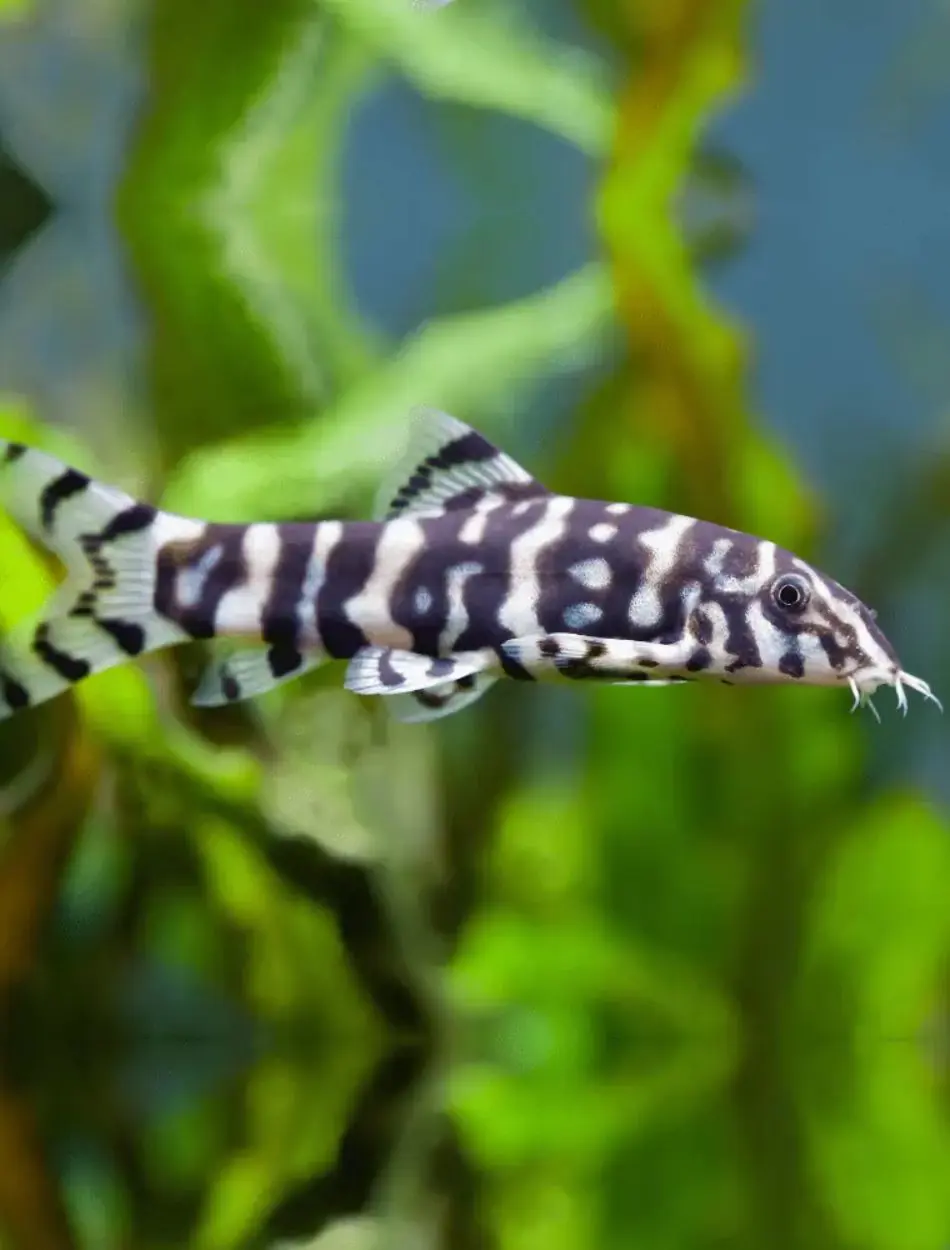
Yoyo Loach is another bottom-feeder fish that is a unique and interactive fish that socializes through the glass and can be seen swimming around and exploring the tank.
They are easily recognizable due to their distinctive pattern of black and yellow stripes resembling a yoyo. They have an elongated cylindrical body with smooth texture and prominent barbels near the mouth. These fish are very energetic and playful creatures that thrive in groups.
They tend to dig around and search through the bottom, so make sure to add soft substrates like sand or fine gravel in your tank. You can also add caves and driftwood as hiding spots to make them feel secure. Moreover, these fish are very easy to feed. They eat various foods such as pellets, live or frozen food, and vegetables.
7. Tiger Shovelnose Catfish
Known for its resemblance to a tiger coat, a Tiger Shovelnose Catfish has a striking pattern of black and yellow stripes. They have broad, shovel-shaped heads with long slender bodies. The presence of barrels and whiskers helps them to detect food.
They are active predators known for their hunting behavior. If you are willing to add one to your tank, make sure to add them to a spacious tank to accommodate their size and activity. Moreover, it is essential to keep them in warm water with proper filtration.
They tend to live in the bottom of the tank and use barbels to search for their food. They also eat smaller fish and invertebrate when found in the wild. However, in captivity, you can provide them with high-quality pellets, live or frozen fish, shrimp, and worms.
8. Siamese Algae Eater
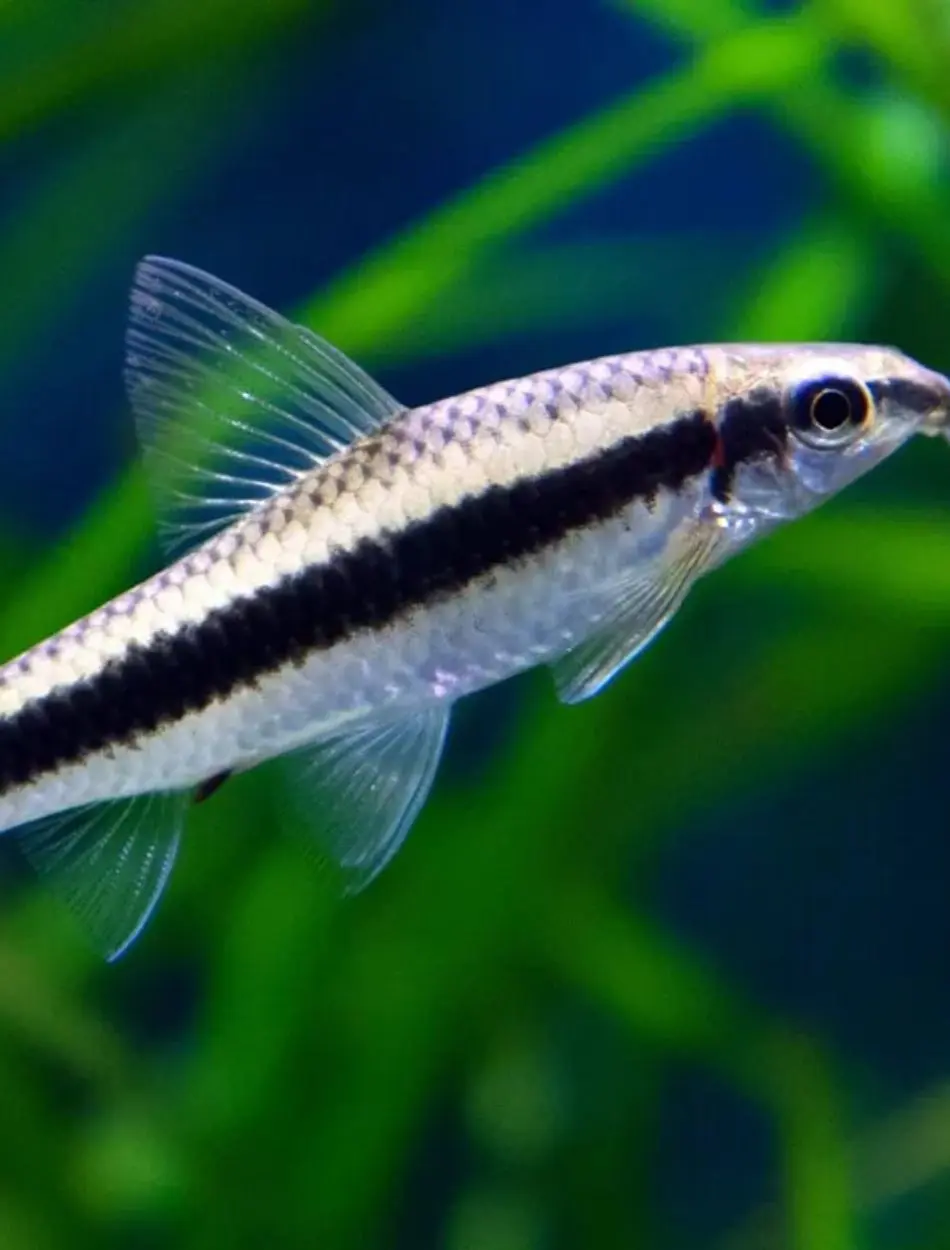
Known for its sleek, torpedo-shaped body, the Siamese Algae Eater is a popular freshwater fish with a silver or golden body. It has a black stripe that runs from its snout through its eye and along its body.
These fish are very active and energetic, swimming around the tank and interacting with their environment. As the name suggests, they consume various types of algae, including green and hair algae, by using their specialized mouthparts to scrape them off of the tank surface.
They prefer to live in a tank with plenty of swimming space and hiding spots. Moreover, these algae eaters prefer slightly acidic to neutral water with stable conditions. If you are planning to add them to your tank, along with algae, make sure to feed them a varied diet packed with essential nutrients.
9. Cory Catfish
Cory Catfish is a compact torpedo-shaped bottom-dwelling fish with a slightly flattened underside. Depending on the species, they are found in various coloration and pattern including spots, stripes, and solid colors.
They should be kept in groups of at least three to six as they are very social. Moreover, they also show peaceful behavior and get along with various fish that are kept in the community tank.
Due to their bottom-dwelling nature, they spend most of their time scavenging and digging the substrate for food. They use barbels to detect food particles in the sand or gravel. These fish can be kept in a tank with a soft substrate and plenty of hiding spots.
They are opportunistic feeders and eat various foods such as pellets, live or frozen foods such as bloodworms, brine shrimp and occasional vegetables.
10. Otocinclus
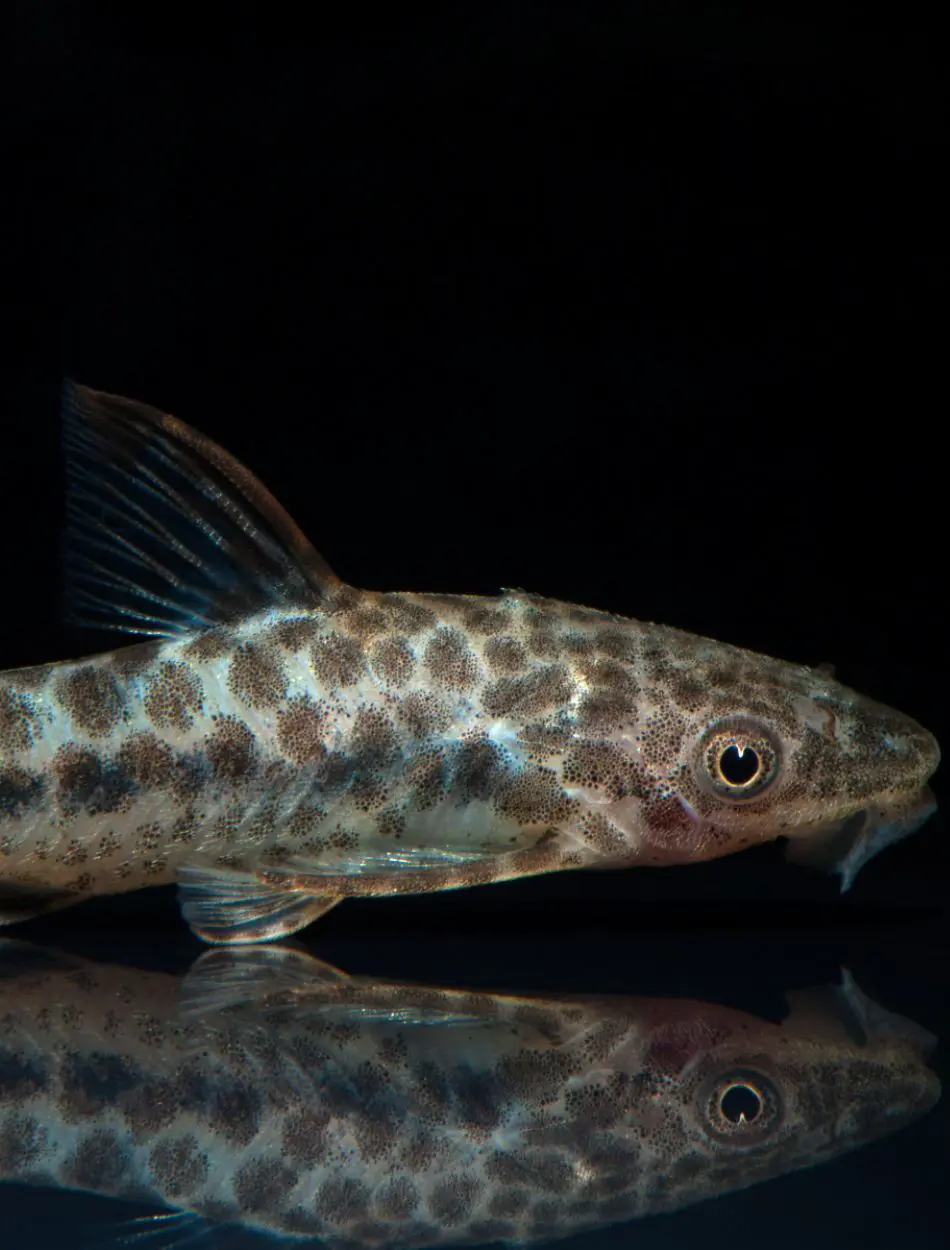
Otocinclus, also known as Otos, is a small, peaceful fish with a streamlined body and a sucker-like mouth. They are light, silver-grey with dark stripes running across their sides.
They are peaceful social fish that thrive in groups of at least six and can be seen slinging to the surface together. Otocinclus prefers algae as their primary food, especially soft green algae and diatoms.
Due to their small size, these fish can access tight spaces making them excellent algae cleaners. They should be kept in a well-planted tank with clean, well-oxygenated water that is slightly acidic to neutral.
Otocinclus is sensitive to poor water quality, so you must change the water regularly and add a high-quality filter to the tank. Their primary food is algae, however, they should be provided with supplementary diets such as algae wafers and balanced vegetables.
11. Crayfish
While adding a crayfish to your tank, you should be aware that these fish can be a little feisty. They have lobster-like bodies with hard exoskeletons, large claws, and segmented bodies. Crayfish tend to show aggressive behavior and can be territorial as well.
They require hiding spots such as caves, rocks, driftwood, and dense vegetation. Make sure to secure the lid of the tank as Crayfish are strong diggers who may escape by rearranging the tank as per their need.
Crayfish are hardy creatures who can tolerate various water conditions. However, you must change the water regularly as it produces large amounts of waste. They are omnivorous and prefer to eat foods such as pellets, vegetables, shrimp, fish, and insects.
12. Kuhli Loach

Kuhli Loach is a fish with a slender elongated body that looks like an eel or worm. They are found in yellowish-brown or orange colors with verticle stripes on their body. These fish are very shy and prefer to hide by burrowing into the substrate.
They are nocturnal fish that are mostly lonely during the day, however, when kept in groups they can be very social. It is recommended to keep them in groups of at least 5-6.
Since they are bottom-feeders, they spend their time searching for food along the substrate. Keeping them in a well-conditioned tank with proper hiding spots, soft substrate, and slightly acidic to neutral water will help lead a healthy life. Their diet consists food like pellets, bloodworms, borne shrimp, and vegetables.
13. Clown Pleco
Clown Plecos have dark brown or black bodies enhanced with bright orange or yellow stripes, giving them a tiger-like look. They are peaceful fish that can be shy, especially during the day.
One of the distinct qualities of Clown Pleco is its liking for wood. They feed on driftwood that helps in their digestion and overall health, resulting in their classification as "wood-eating" plecos. They also eat supplements such as algae wafers, blanched zucchini and cucumber, bloodworms, and brine shrimp.
Their tank setup should be done by placing caves, rocks, and most importantly driftwood. If you prefer to mimic their natural habitat, you can also add fine gravel or sandy substrate and make sure stable water condition with good filtration is provided.
14. Cherry Shrimp

Cherry shrimps are vibrant red-colored species that exist in various color morphs such as "Sakura" or "Fire Red" varieties. They are active and have a peaceful temperament and are mostly seen grazing on algae and biofilm.
They tend to explore the environment and are quite busy searching for food. These shrimp survive well in well-planted aquariums with live plants. You can add mosses such as java moss that act as a hiding spot as well as a place to find food and shelter.
Keep them in water that is slightly acidic to neutral maintaining stable water parameters and avoiding sudden changes. Make sure to feed them algae, biofilm, shrimp pellets, and blanched vegetables.
15. Panda Garra
Panda Garra is a freshwater fish that consists of black and white or cream-colored banding that resembles the marking of a panda. They have robust flat bodies with sucker-like mouths.
They are generally peaceful, but can sometimes show semi-aggressive and territorial behavior, especially towards their kind or other bottom dwellers. To avoid this from happening, provide them with plenty of space and hiding spots.
These species are algae eaters that help to clean the tank by nibbling on them. However, they also eat other supplementary food such as pellets, algae wafers, and vegetables. To make sure they lead a healthy life, you should keep them in a well-oxygenated tank with good water quality.
16. Pictus Catfish

Pictus Catfish is an attractive fish with a silvery body, black spots, and long barbels. They flourish in a well-oxygenated tank that consists of sandy substrates and numerous hiding spots. If you are planning to add one, make sure they are kept in the group.
These fish show a peaceful temperament but may eat smaller tank mates. They should be kept in slightly acidic to neutral water that is well-maintained, well-oxygenated, and clean. Their diet should consist of food like pellets, bloodworms, brine shrimp, and daphnia.
17. Pigmy Cory
Pigmy Cory is a charming aquarium fish that has a slender, streamlined body with a pale, silvery color along with dark spots and distinctive patterns. They are best suited in well-planted tanks that consist of soft, sandy substrates and hiding spots.
Being bottom-dwellers and omnivorous they look out for food on the tank floor, particularly enjoying sinking pellets, live or frozen foods, and vegetables. They are active and social fish which makes them an ideal community fish that enhances the aquarium.
Keeping them in a well-planted tank consisting of hiding spots such as caves, driftwood, and slightly acidic to neutral water conditions will help lead them to a healthy and long life.
18. Blue Neon Goby
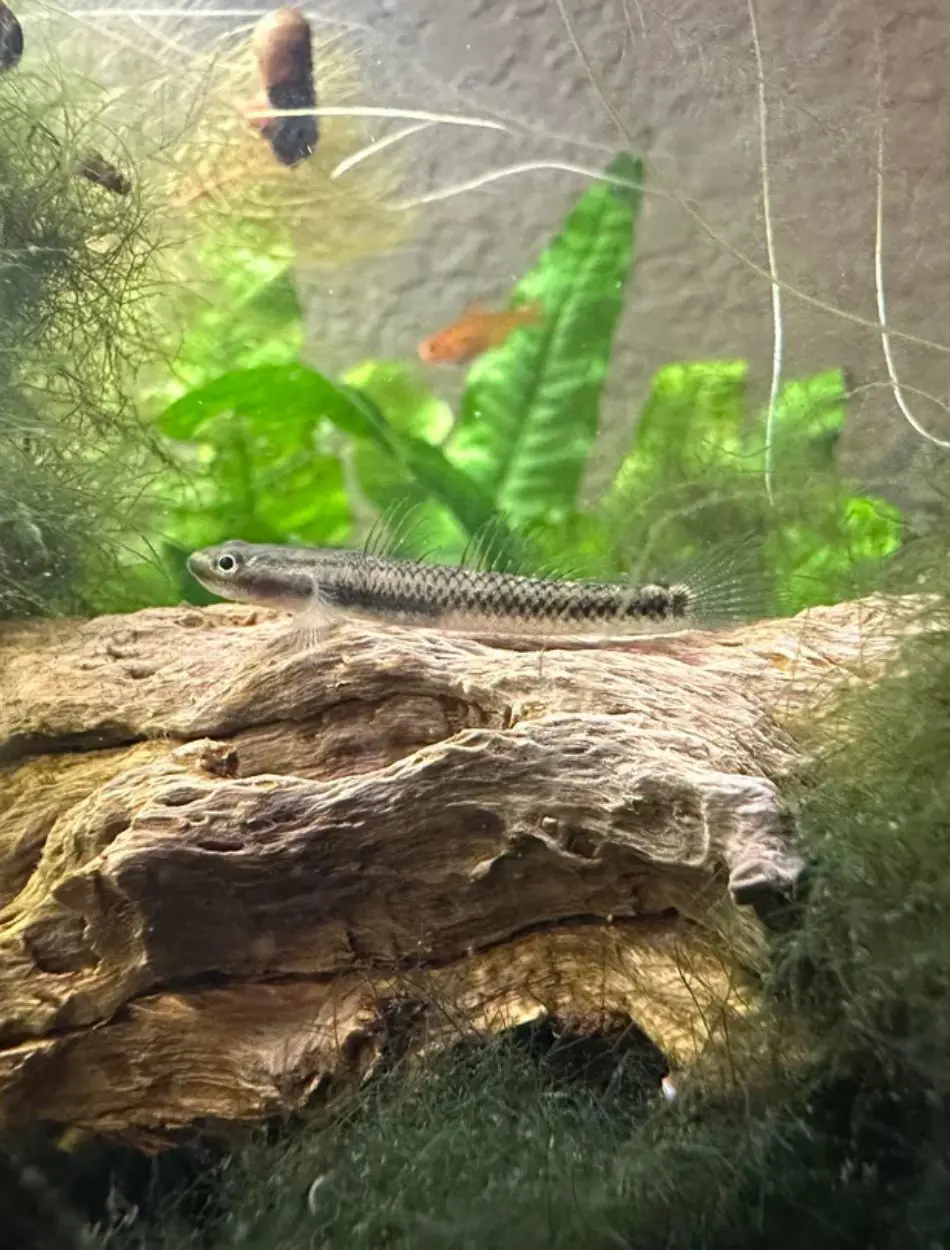
Blue Neon Goby is an attractive and vibrant fish that has an iridescent blue body with a black stripe. These fish survive well in marine or brackish tanks that consist of plenty of hiding spots.
They are peaceful and social and can be seen roaming around and interacting with other fish in the tank. They act as cleaner fish who feed on parasites and dead skin from larger fish. It is crucial to keep them in a tank with good water quality and a stable environment.
In the wild, their primary diet consists of invertebrates and zooplankton. In the tank, you can provide them with diets such as marine flakes, and frozen or live foods such as brine shrimp and mysis shrimp.
19. Oil Catfish
Oil Catfish is a fascinating and hardy species that has a large, stout body covered in thick, tough skin. They have mottled colorations ranging from brown to black along with barrels and large mouths.
These fish spend most of their time searching for food in the substrate. They are opportunistic feeders that consume food found on the bottom of the tank along with sinking pellets, bloodworms, shrimp, and plant matter.
They require spacious tanks filled with sand and gravel, rocks, driftwood, and caves that replicate their natural environment. You should also make sure to perform regular water changes and good filtration so that they are healthy and lead a long life.
20. Botia Loaches

Botia Loaches, a vibrant and active freshwater fish that has unique patterns and lively behavior, can be another perfect addition to your tank. They have elongated bodies with distinct colors that help them thrive in tanks filled with soft substrates and plenty of hiding spots.
They exhibit playful behavior and prefer slightly acidic to neutral water. These bottom-dwellers prefer food like sinking pellets, live or frozen foods, and occasional vegetables. They are generally very peaceful but can be territorial as well. They do well when provided with spacious, well-maintained tanks with other loaches or large, non-aggressive fish.
Top Lists

